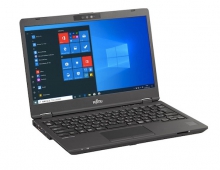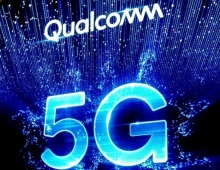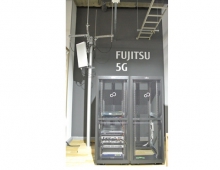
Japan Demonstrates Multi-Vendor Equipment Interoperability in Transmitting 100 Gigabit Ethernet Signals over an Optical Network
Japanese companies Fujitsu Limited, NEC, and Anritsu today have demonstrated an optical network interface technology that will allow 100 gigabit-class communications over multiple optical networks, some 2.5- to 10-times faster than current speeds.
This is the first time in the world that the transmission of 100 Gbps Ethernet signals over multiple optical networks using equipment from multiple vendors has been successfully demonstrated.
Details of the test are being presented at the 25th Symposium on Optical Communication Systems, running December 15?16, 2011, in Mishima, Shizuoka Prefecture in Japan.
With the proliferation of broadband lines and smartphones, telecommunications carriers need to increase the speed and capacity of their networks. This led various international standards bodies to promulgate a series of international standards in 2010 relating to communication technologies for Ethernet and optical networks operating at 100 Gigabit-class speeds, 2.5- to 10-times current speed levels. In order to use these technologies to bring about the creation of a 100 Gigabit-class optical network interconnect between different telecommunications carriers at their offices, there was a need to demonstrate the interoperability of equipment from different vendors.
Fujitsu, NEC, and Anritsu participated in the effort to develop an interface that complied with Optical Transport Network (OTN) technology for transmitting 100-Gbps Ethernet signals over an optical network, standardized by the ITU-T in 2010. An optical transport network (OTN) is based on wavelength division multiplexing for connecting two locations and carrying Ethernet signals or other user-level signals as light wavelength signals.
Fujitsu and NEC performed an assessment of interoperability and a basic performance assessment of an OTN interface that accommodates 100-Gbps Ethernet, on prototype equipment from multiple vendors, using instrumentation provided by Anritsu. These tests were the world's first to successfully demonstrate the interoperability of equipment using this interface, and they confirmed that 100-Gbps Ethernet signals were transmitted with 100% transmission efficiency. This interface technology will enable the optical networks of different telecommunications carriers to be interoperable at 100 Gigabit-class speeds.
These tests were carried out as part of the "Ethernet over OTN Technology R&D Project," one of the joint research topics for collaboration among industry, academia, and the Japanese government being pursued by the Interoperability Working Group of the Kei-hanna Info-Communication Open Laboratory.
Details of the test are being presented at the 25th Symposium on Optical Communication Systems, running December 15?16, 2011, in Mishima, Shizuoka Prefecture in Japan.
With the proliferation of broadband lines and smartphones, telecommunications carriers need to increase the speed and capacity of their networks. This led various international standards bodies to promulgate a series of international standards in 2010 relating to communication technologies for Ethernet and optical networks operating at 100 Gigabit-class speeds, 2.5- to 10-times current speed levels. In order to use these technologies to bring about the creation of a 100 Gigabit-class optical network interconnect between different telecommunications carriers at their offices, there was a need to demonstrate the interoperability of equipment from different vendors.
Fujitsu, NEC, and Anritsu participated in the effort to develop an interface that complied with Optical Transport Network (OTN) technology for transmitting 100-Gbps Ethernet signals over an optical network, standardized by the ITU-T in 2010. An optical transport network (OTN) is based on wavelength division multiplexing for connecting two locations and carrying Ethernet signals or other user-level signals as light wavelength signals.
Fujitsu and NEC performed an assessment of interoperability and a basic performance assessment of an OTN interface that accommodates 100-Gbps Ethernet, on prototype equipment from multiple vendors, using instrumentation provided by Anritsu. These tests were the world's first to successfully demonstrate the interoperability of equipment using this interface, and they confirmed that 100-Gbps Ethernet signals were transmitted with 100% transmission efficiency. This interface technology will enable the optical networks of different telecommunications carriers to be interoperable at 100 Gigabit-class speeds.
These tests were carried out as part of the "Ethernet over OTN Technology R&D Project," one of the joint research topics for collaboration among industry, academia, and the Japanese government being pursued by the Interoperability Working Group of the Kei-hanna Info-Communication Open Laboratory.





















